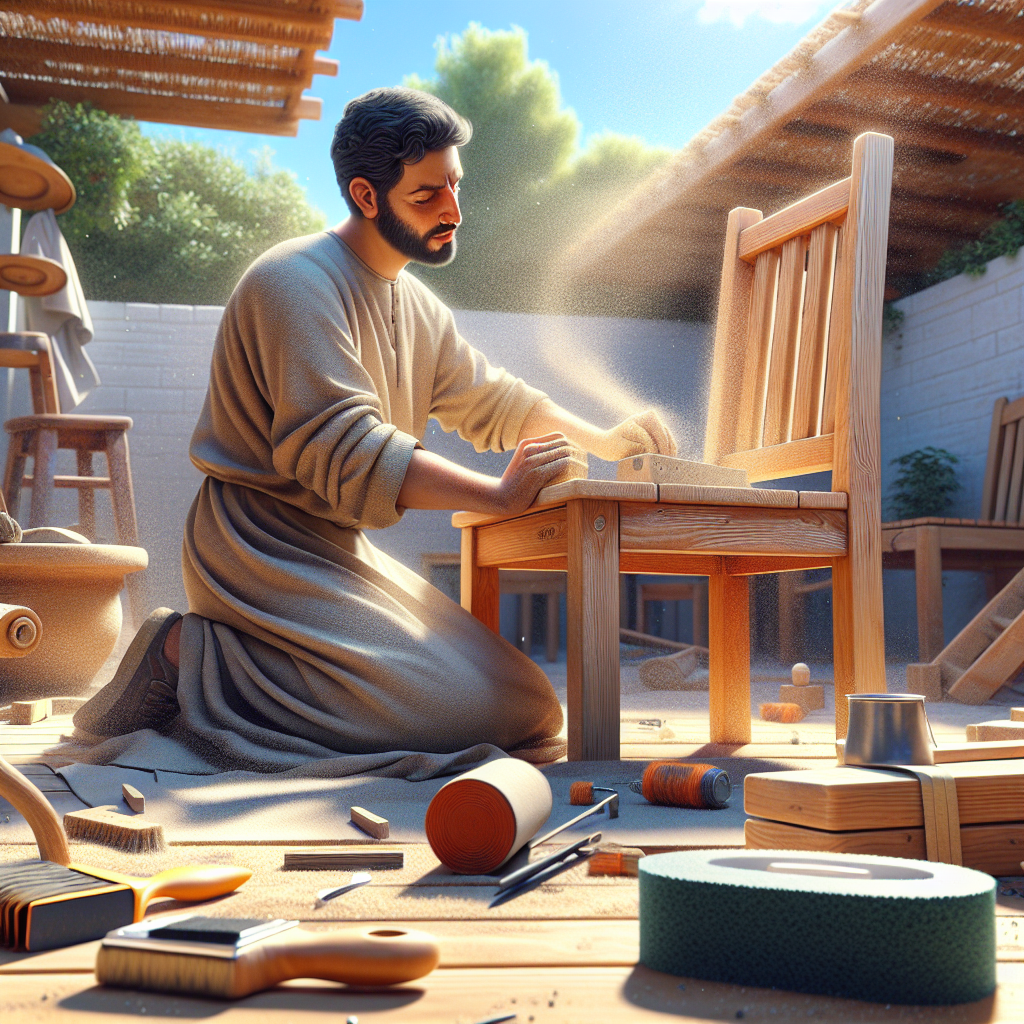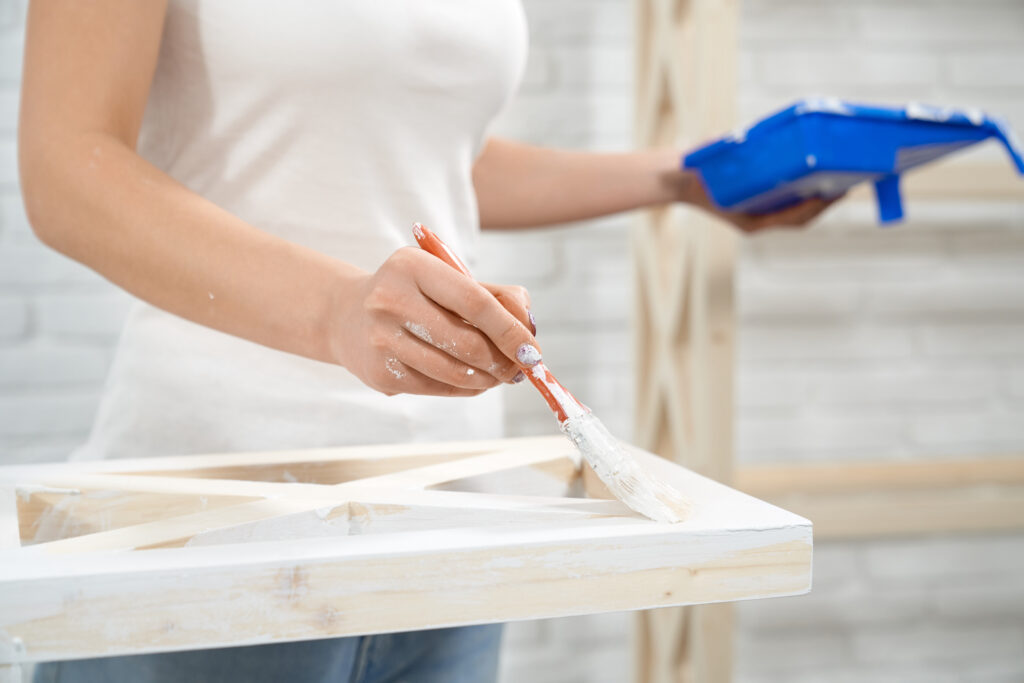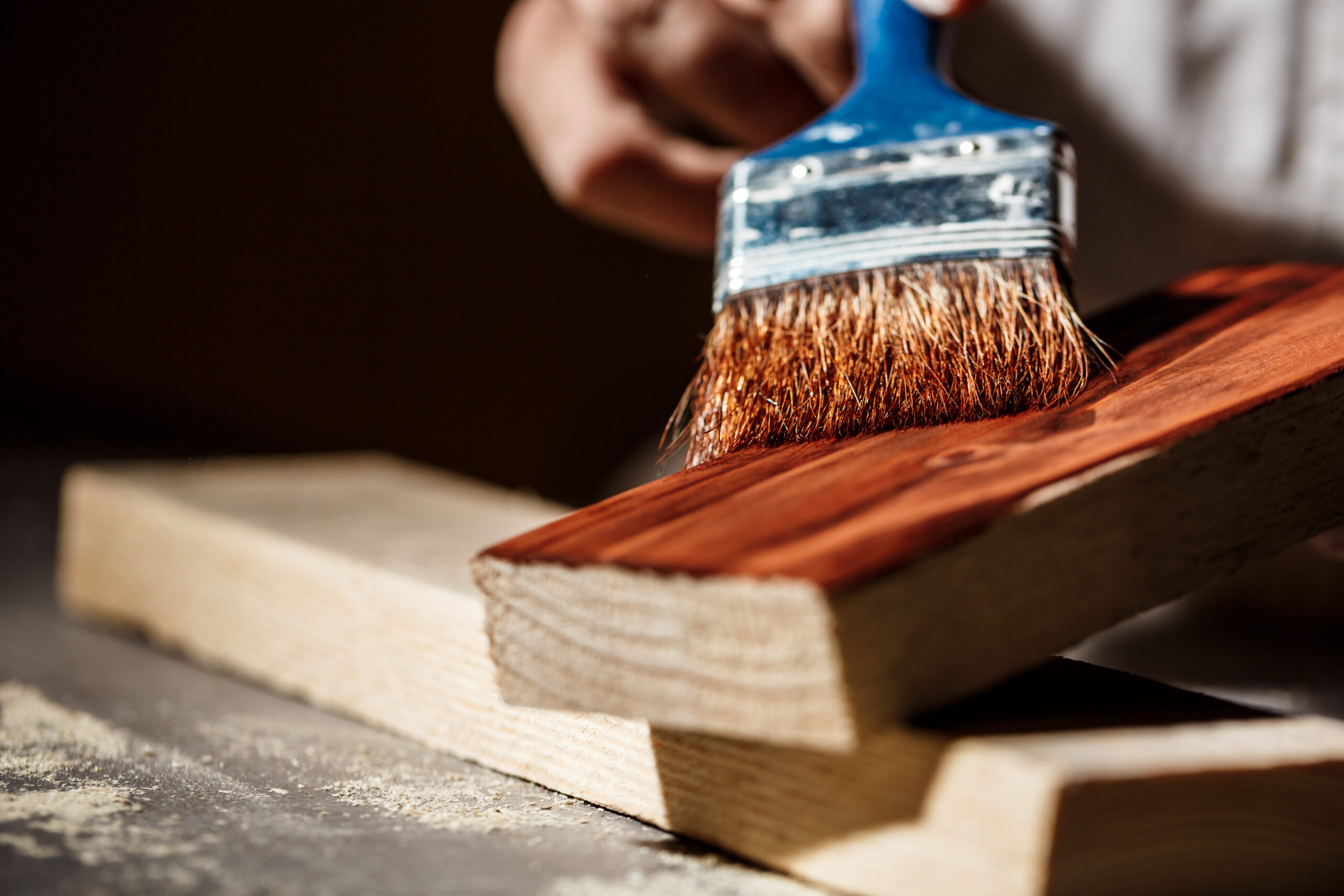Introduction
Breathing new life into your outdoor space can be as simple as adding a fresh coat of paint to your furniture. Painting outdoor furniture not only enhances the visual appeal but also extends its lifespan, making it a cost-effective solution for revitalizing your patio, garden, or balcony.
Painting outdoor furniture is important because it:
- Protects against harsh weather conditions.
- Prevents rust and deterioration.
- Enhances aesthetic appeal.
Renewing your outdoor furniture offers several benefits:
- Cost-Efficiency: A fraction of the cost compared to buying new pieces.
- Customization: Choose colors and finishes that reflect your style and complement your outdoor decor.
- Sustainability: Reduces waste by giving old furniture a second chance.
The painting process is straightforward yet transformative. Start with thorough preparation, addressing any existing damage or wear. Choosing the right type of paint is crucial to withstand environmental elements. Priming ensures long-lasting results, and proper application techniques provide a professional finish.
By following these essential steps, you can transform your outdoor space into an inviting oasis that stands the test of time. Get ready to turn those tired-looking pieces into vibrant focal points in your garden or patio!
Explore our guide on outdoor metal furniture to find inspiration that will perfectly complement your painting projects.
Preparing to Paint Outdoor Furniture

Before diving into painting, evaluating the condition of your outdoor furniture is essential. This initial step determines the amount of preparation needed and influences the choice of paint and primer. Whether you’re planning to spray paint outdoor wicker furniture or considering how to paint outdoor aluminum furniture, a thorough evaluation helps set the stage for success.
Key Steps in Preparation:
- Condition Evaluation: Inspect your furniture for damage, rust, or loose paint. Understanding these aspects will guide your preparation process and ensure a smoother painting experience.
- Rust and Loose Paint Removal: For metal pieces, like when considering paint for garden furniture from B&Q, use a wire brush or scraper to remove rust and flaking paint. This step is vital for achieving a smooth finish that adheres well.
- Surface Cleaning: Dirt and grime can prevent paint from sticking properly. Clean surfaces with a mild detergent solution, especially important if you plan to paint outdoor furniture white. Thorough cleaning ensures that the new coat of paint adheres properly and lasts longer.
Addressing these preparation steps will significantly enhance the durability and appearance of your painted furniture, whether it’s the best paint for outdoor cane furniture or specialized options for metal surfaces.
Dive into our guide on cleaning outdoor furniture and discover effective techniques that will keep your pieces looking brand new for years.
Selecting the Perfect Paint for Outdoor Furniture
When it comes to choosing paint for your outdoor furniture, understanding the fundamental differences between indoor and outdoor paint is essential. Indoor paints are not designed to withstand harsh weather conditions, while outdoor paints are formulated to endure elements like rain, sun, and temperature changes. Prioritizing quality ensures longevity and protects your investment.
Several recommended brands have developed a reputation for providing durable and weather-resistant options. Rust-Oleum and Krylon stand out for their specialized formulations that cater specifically to various materials. Their products offer excellent coverage and come in a variety of outdoor metal furniture paint colors, suitable for projects like painting an outdoor glass table top or renewing outdoor iron furniture.
Different materials require specific types of paint:
- Metal: Opt for outdoor metal furniture paint that includes rust inhibitors. For instance, you might want to explore some effective strategies on how to paint metal patio furniture which could provide valuable insights.
- Wood: Outdoor furniture spray paint can be effective but consider acrylic enamel paints for a brush-on approach.
- Wicker: Look for flexible formulas that adhere well without cracking over time.
Choosing the right product not only enhances appearance but also serves as a protective layer against the elements. Whether you’re aiming to paint outdoor wicker furniture or seeking vibrant finishes, selecting the appropriate type is crucial in ensuring your project’s success.
Priming Your Furniture: The Key to Long-lasting Results
Priming is a crucial step when you paint outdoor furniture, ensuring both durability and adhesion. Without this essential process, even the highest quality paint might fail to bond properly, leading to peeling or chipping over time.
Types of Primers
Different surfaces require specific types of primers:
- Metal Surfaces: Rust reformer primers are ideal for heavily rusted metal furniture. These primers not only prepare the surface for painting but also convert rust into a paintable surface, preventing further corrosion.
- Wood Surfaces: A good exterior wood primer seals the wood, preventing moisture ingress and enhancing paint adhesion. Opt for a primer that provides weather resistance for outdoor conditions.
- Plastic and Wicker: Use a special bonding primer designed for slick surfaces like plastic or resin wicker. These primers help create a surface that allows the paint to adhere effectively.
Before applying any primer, ensure the surface is clean and dry. This step is key to achieving a professional finish that lasts.
Application Techniques for a Professional Finish

Achieving a flawless finish when painting furniture involves mastering the right application techniques.
Using Spray Paint Grips
Using spray paint grips is highly recommended. These grips provide better control and comfort, reducing finger fatigue during prolonged use. By attaching a grip to your spray can, you achieve an even coat more effortlessly, ensuring consistent pressure and minimizing the risk of drips.
Understanding Distance and Motion
Understanding the ideal distance from the surface is crucial. Maintain a distance of about 6 to 12 inches between the spray nozzle and the furniture surface. This range allows for optimal paint distribution without pooling or overspray. A consistent back-and-forth motion, overlapping each pass slightly, helps in achieving an even coverage.
Tips to Avoid Unevenness
To avoid unevenness, consider these tips:
- Thin Coats: Apply multiple thin coats rather than a single thick one. This ensures even drying and reduces the risk of runs.
- Angle Adjustment: Change angles frequently to cover all sides and crevices, especially for intricate designs or textured surfaces.
Incorporating these spray painting tips into your process not only enhances the final look but also maximizes the durability of your painted furniture. Each step in this section sets the foundation for a professional-grade finish that stands up to outdoor conditions effectively.
Drying Time, Curing Process, and Maintenance After Painting Your Outdoor Furniture
Achieving a professional finish extends beyond just the application of paint. Drying time is crucial in preventing smudging or damage. Generally, you should allow 30 minutes to one hour between coats to ensure each layer is properly set. This interval helps in maintaining the integrity of your work and prevents unwanted mixing or running of colors.
Once you’ve applied all coats, the furniture must undergo a curing process. This step is essential for developing a hard, durable finish capable of withstanding outdoor elements. Typically, you should wait at least 48 hours before using or decorating your freshly painted pieces with cushions or accessories.
To maintain the vibrant appearance and longevity of your outdoor furniture, regular maintenance is key. Consider these tips:
- Regular Touch-Ups: Inspect your furniture periodically for any chips or scratches and retouch them promptly.
- Sealing Options: Applying a clear coat sealant can offer additional protection against humidity, UV rays, and general wear and tear.
By incorporating these maintenance strategies, you’ll ensure your furniture continues to enhance your outdoor space while standing up to the test of time.
Special Considerations Based on Material Types: Wood, Fabric, Metal, Wicker, Cane, Aluminium!
When painting outdoor furniture, understanding material-specific considerations is crucial. Each material requires unique preparation and paint application techniques to ensure a durable and attractive finish. Here’s how to tackle various common materials:
Wood
- Preparation: Before painting an outdoor wood table or any wooden furniture, sand the surfaces thoroughly. This not only removes old finishes but also creates a rough surface for better paint adhesion. Use coarser grits like 80-100 for initial sanding and finer grits such as 120-150 for finishing.
Fabric
- Painting Fabric Components: Sling seats or fabric components on furniture need specialized fabric sprays designed for outdoor use. These sprays provide flexibility and weather resistance. Brands like Krylon offer options that bond well with fabrics without cracking.
Metal
- Rust Removal: For metal surfaces, rust must be completely removed using a wire brush before applying any primer or paint. Choose rust-inhibiting primers to enhance longevity.
Wicker & Cane
- Uniform Coating: Wicker and cane furniture benefit from spray paints that penetrate intricate patterns. Applying several light coats ensures even coverage without clogging the weave.
Aluminum
- Surface Treatment: Aluminum needs a non-ferrous metal primer to prevent oxidation before painting. It’s vital for ensuring the paint adheres properly and lasts longer.
Each of these materials demands attention to detail in preparation and product choice, transforming your outdoor space into an inviting oasis with painted furniture that can withstand the elements.
Conclusion
With the power of DIY projects, you can transform your outdoor space and give it a professional look. Painting outdoor furniture is more than just a chore; it’s a chance to add your personal style to your surroundings. By using the right techniques and tools, you can make your outdoor area a lively extension of your home.
Take satisfaction in creating a space that not only showcases your taste but also withstands the weather. Let your imagination run wild as you paint your outdoor furniture, transforming basic items into stunning centerpieces.
FAQs (Frequently Asked Questions)
What are the benefits of painting outdoor furniture?
Painting outdoor furniture can transform your outdoor space, enhance its appearance, and protect it from the elements. It allows you to renew old furniture, making it look new again while also extending its lifespan.
How do I prepare my outdoor furniture for painting?
Preparing your outdoor furniture involves evaluating its condition, removing rust and loose paint for a smooth surface, and cleaning it with a mild detergent solution to eliminate dirt and grime before starting the painting process.
What type of paint should I use for outdoor furniture?
It’s important to choose paint specifically designed for outdoor use due to the exposure to weather conditions. Recommended brands like Rust-Oleum and Krylon offer durable, weather-resistant options suitable for various materials such as metal, wood, and wicker.
Why is priming necessary before painting outdoor furniture?
Priming is crucial as it ensures better durability and adhesion of the paint. Different types of primers are available for various surfaces; for heavily rusted furniture, a rust reformer primer is recommended.
What are some tips for achieving a professional finish when applying paint?
To achieve a professional finish, use spray paint grips for ease of use and maintain an ideal distance from the surface to avoid drips. Apply coats evenly and allow recommended drying times between coats to prevent smudging or damage.
How can I maintain my painted outdoor furniture after completing the project?
After painting, it’s essential to follow the recommended curing time before using the furniture. Regular touch-ups and sealing options can help maintain its appearance over time and ensure long-lasting results.


